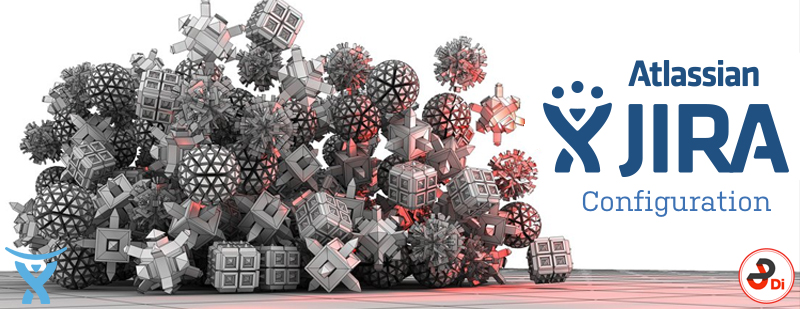AT A GLANCE
Take home message: The right JIRA configuration is customised to your business, well managed over time and leverages expertise. If that’s you, read on. If that’s not you – really read on.
Why read this blog post: A beautiful configuration gets user buy-in, boosts productivity and saves time and money in administration.
What’s new: The three golden rules to configuration and customisation.
READ ON…
To help match JIRA to your business needs, JIRA enables you to custom design the display and behaviour of issue fields, screens and workflows.
For example, to match your operations, your business will want its own JIRA issue types in addition to the standard ‘Task’, ‘Story’ and ‘Bug’ that come out of the box. You will want to create new fields that are unique to your industry and your teams. Some fields will be optional while others will be required. You will have your own words for priority levels and for the status of an issue. And of course, your Atlassian workflow and your business processes should be completely in-sync.
You will also want to configure the way a screen looks to the user. This goes beyond just the company logo and colour scheme. You will want some fields visible and some fields hidden, depending on the user and the team. In some cases, the way the various fields are positioned on the screen will be important.
Increasingly, Atlassian users are expanding the use of JIRA outside of the software development and IT departments and into the areas of marketing, human resources, strategic planning and accounting. Again, configuration will ensure that the right language and processes are used for each team and their specific deliverables.
In other words, you can configure JIRA to make it look, feel and operate like a unique, ever-evolving, custom build for your organisation (at a very good price).
Sounds great, right? And it is. A beautiful configuration is a joy to behold. Most importantly, it makes your people want to use the system. There are, however, at least three golden rules to configuration.
The Golden Rules
Rule 1: Have a plan
Make sure you spend the time mapping your business needs and configuring to meet these needs. Ask as many ‘what if’ questions as you can. Test the concepts with your teams. Think about what management visibility you need and the type of reports that you expect. Work out the training required for staff. It’s been said before (but that’s because its true) – each hour spent at this stage is going to save you many hours down the track having to change things.
Rule 2: Map and manage
Every business is unique and every business changes uniquely. Configuration matches your needs and evolves over time. But as your use of the Atlassian stack grows, the need to keep track of your existing configurations, understand the impact of new configurations and prepare for events such as data migration is critical. And if your workforce changes fairly regularly, the need to have a good system to manage configurations is even more crucial.
Rule 3: Tap into expertise
OK, we have a vested interest in this rule, but it stands up to common sense. You can burn a lot of time reinventing the wheel or you can get buy some effective advice on the configurations that work and get them set up in double-quick time. And if there’s been a lapse in the management of configurations at your business and it’s all looking a bit too hard to get back on track, don’t panic, we’ve seen it before and can get things humming again.

At Design Industries, we work with some of Asia-Pacific’s largest companies – implementing Atlassian into their environment, including strategy, integrations and configuring their use of the Atlassian stack. We also work with smaller and medium sized Australian organisations across a range of sectors, bringing them Atlassian collaboration and efficiency matched to their lean business needs. And concurrently, our team of Atlassian experts develop custom apps and fine-tune our own Atlassian configurations in a process of practical research and development. When you tap into experts such as Design Industries, you get the benefit of all these success stories.
In addition, we are constantly using and reviewing plug-ins in the Atlassian marketplace. One that has caught our eye is Configuration Manager for JIRA. It enables JIRA administrators to get a snapshot of configurations for individual projects or whole systems in a matter of minutes. The user interface enables new configurations to be analysed against the existing system, revealing the impact to other projects before deploying a change.
Want to know more? Contact us here.



